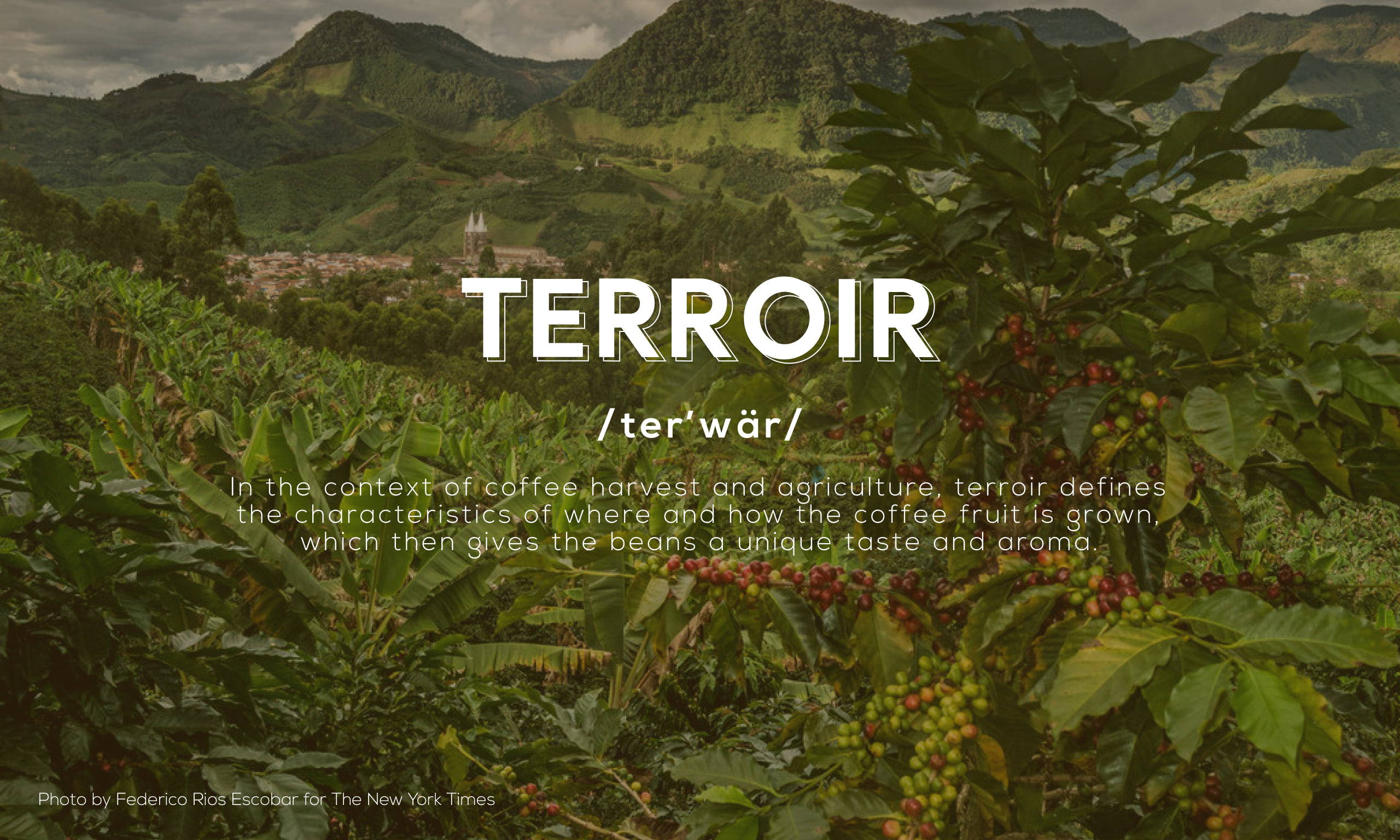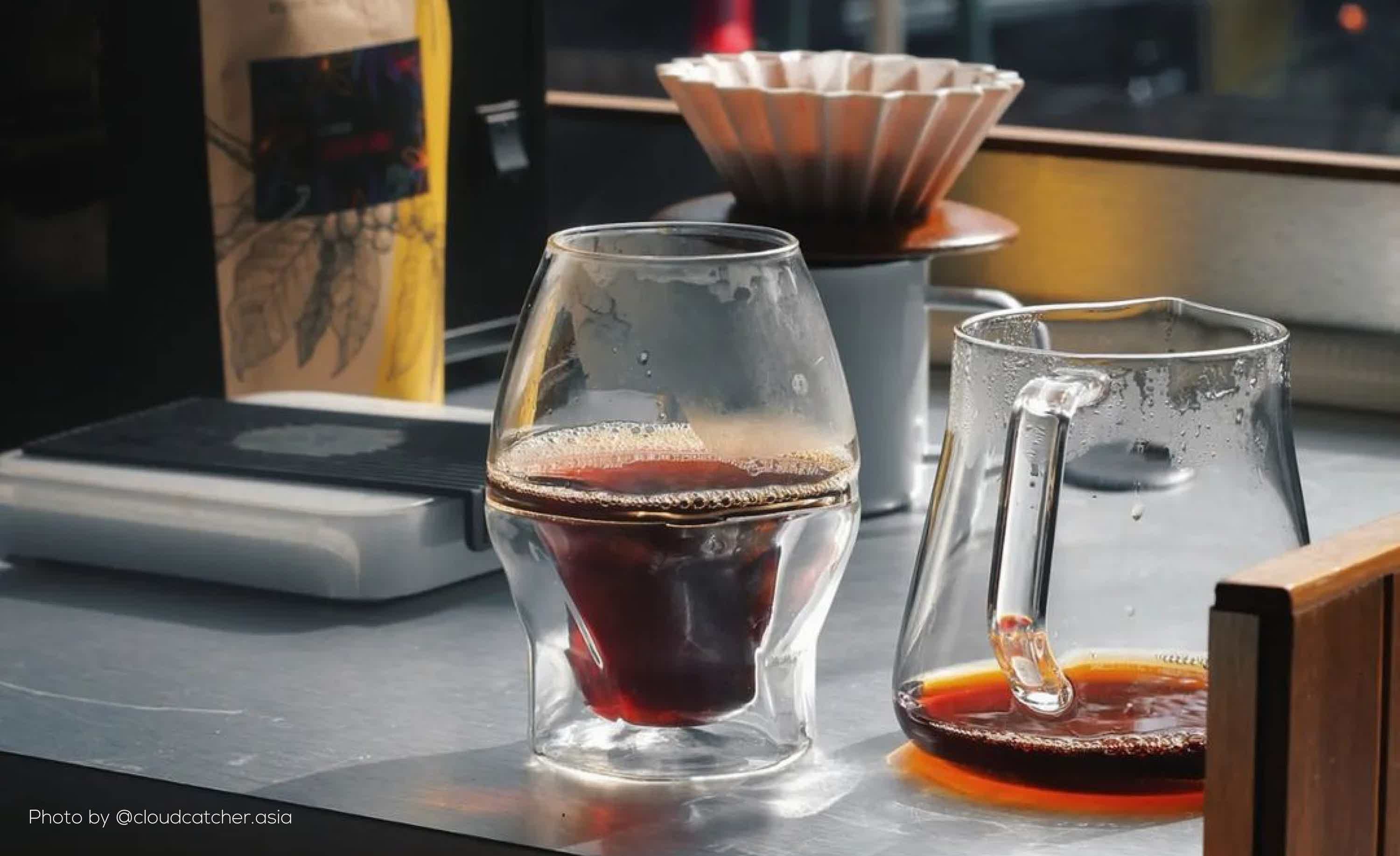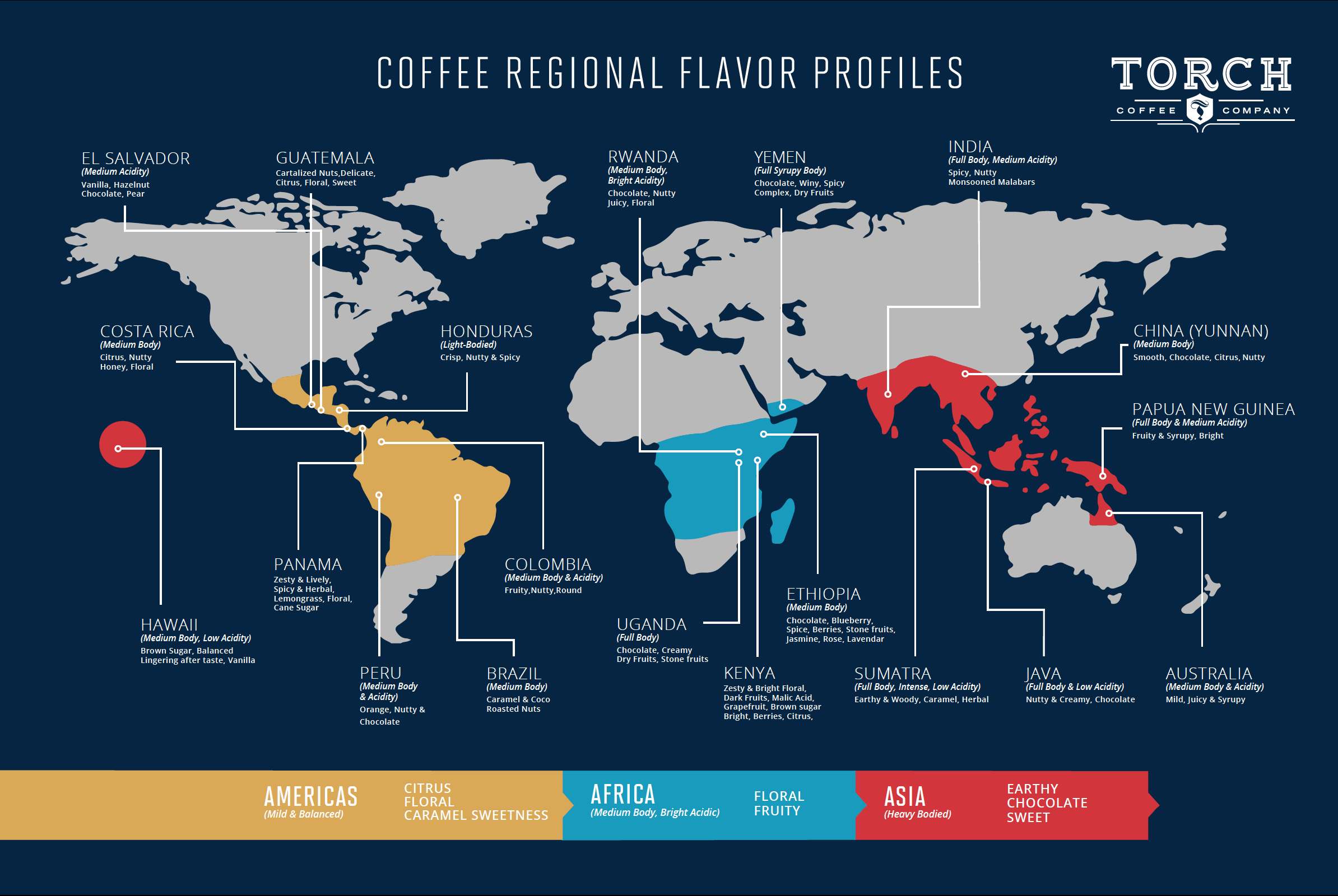Ever wonder what’s the meaning behind the ‘elevation’ number on the packaging of your favorite coffee beans? There’s a good reason why some coffee companies make sure to include that on the packaging and it’s all related to the coffee’s ‘terroir’.
Terroir is a term that often gets thrown around when we talk about coffee and its origins. While it often gets overlooked — with much focus on roast, bean varietal, etc — you’d be surprised at how much the terroir affects (or even defines) the coffee you’re drinking.
What Is Terroir?

Terroir (pronounced as ‘ter-wahr’) is a French word that literally means “earth.” In the context of coffee harvest and agriculture, terroir defines the characteristics of where and how the coffee fruit is grown (yes the coffee bean actually comes from a cherry fruit!), which eventually contributes to the signature characteristics of each coffee variety.
Simply put, this is what makes an Ethiopian coffee different from coffee varietals you might find in Brazil, Colombia, Indonesia, and so on. Even the slightest change in the terroir creates a different set of characteristics in your coffee, meaning it will taste different even if they’re of the same varietal and are from neighboring countries.
That said, it’s important to point out that ‘terroir’ doesn’t just refer to the elevation at which it's grown. It comprises a number of factors that affect the crop. For avid coffee drinkers, such as yourself, terroir determines how your brewed coffee tastes. However, for roasters and producers, terroir greatly impacts the roast profile of their beans down to its molecular composition.

Say hello to your new coffee e-zine for the most interesting news, tips, and trends in the world of coffee.
4 Key Factors That Affect Terroir

Infographic from Torch Coffee Company
Now that we’ve come to understand how terroir affects the coffee we drink, it’s time to get a deeper understanding of what factors affect the terroir in growing great tasting specialty coffee.
1. Soil
Given that ‘terroir’ directly translates to earth, it should be no surprise that soil comes first on our list of factors affecting terroir. Minerals found in the soil can greatly influence the body and the acidity of the coffee. In terms of using optimal soil, you might be surprised to know that volcanic soil is excellent for growing coffee. That’s because it’s rich in nutrients that are essential for plants, such as potassium, magnesium, calcium, phosphorus, zinc, etc.
Having said this, there’s still a huge difference with volcanic soil found in certain places like Hawaii compared to that of Kenya — and this may have something to do with the climate.
Even the types of complementary crops that are grown next to the coffee trees impact the final flavor in your brew. Emerging research is showing how growing fruits/vegetables like avocados in the same soil as coffee can alter and influence the tasting notes. Farmers and producers can then experiment by growing different fruits & vegetables with their coffee trees to create unique flavor profiles.
2. Climate
If there’s one thing in common among countries that are known for growing specialty coffee beans, it’s that they can be found along what’s called the “coffee bean belt.” It’s a region located near the equator, but stretches far and wide reaching southern countries like Brazil and Tanzania and as far up north as Mexico, Myanmar, and even California, USA.
Countries and areas found along the “coffee bean belt” are known for having optimal conditions to grow coffee fruit, but they still have varying climates that are categorized under “macro” and “micro.” Macro refers to the overall climate of a certain region within a country, while micro pertains to that of a small area of a region that may have varying conditions due to its location and surrounding landmass.
Coffee crops need both rainy and dry seasons to flourish. The rainy season is perfect for growing the coffee plants and allowing them to absorb all needed nutrients. On the other hand, the dry season presents the perfect condition for harvesting and processing.
3. Elevation
Much like cultivating grapes for wine, growing the right kind of specialty coffee also depends on its elevation. However, the old adage that says the higher the elevation, the sweeter and better quality of fruit you’re going to get, doesn’t fully cover coffee crops like it does for wine. For coffee, it’s more about the temperature.
A colder atmosphere is a key factor in creating more acidity in your coffee. It also directly affects the maturation of the fruit. Fruits with slower development are known to have a higher concentration of sugar, giving it more complexity and density, and typically higher elevation correlates with slower coffee cherry development
Elevation is sometimes indicated on the coffee packaging because it proves useful in comparing two farms from the same region. It can differentiate two types of coffee from one region in Ecuador, but it’s not so useful in differentiating an Ecuadorian coffee from a Yemeni one, for example.
Look out for the growing elevation specified on your coffee bags – coffee grown at higher elevations tends to be of higher quality since it requires greater skill and resources to grow at these altitudes. With that high quality comes more complex flavor notes than coffee grown at lower elevations, which tends to be more accessible for mass produced commercial coffee.
4. Tradition
Some roasters would stop at elevation in naming the key factors that affect terroir. However, it does pay to recognize the “human” factor in caring and growing these crops — and this is where tradition plays a part.
With local specialty coffee gaining more traction in the industry, tradition has become an even more important factor in defining unique characteristics of a particular variety. This covers the unique method of harvesting, processing, grading, and roasting coffee and how it affects the flavor and aroma.
Tradition in coffee also acknowledges the circumstances that brought about unique flavors and tastes of the beans. For example, coffee in Uganda is known to have a vast range of flavor profiles thanks to how the fruits are cultivated. Coffee production in Uganda is mostly done in farms that are less than a hectare in size. More often than not, growing coffee fruits rely heavily on intercropping — which means the fruits are cultivated side by side with other plants to promote its soil health and for the coffee plants to receive natural shade. Another aspect of tradition is the way the beans are processed. In Uganda, they observe either natural washing or natural processing depending on the location and how it’s long been observed in that particular area. All of these aspects contribute to the tradition of growing coffee in Uganda and this is why you can expect to see different flavors of Ugandan coffee (FYI, they’re mostly known for their Robusta blend).
In choosing what coffee varietal to get, it helps to get an idea of what makes a certain region unique. This is also why it’s so exciting to get a taste of different coffee varietals — from Ethiopian to Ugandan, Indonesian to Vietnamese, and so on. Sampling coffee from these regions and countries gives us insight into the tradition and culture behind the beans.
So How Important Is Terroir in Coffee?
Let’s just say, it’s very, very important.
Even the most subtle change in terroir can impact the growth of the fruit. The terroir can also be seen as a coffee bean’s DNA, which gives each bean its unique characteristics. In the same way that you’re different from your sibling even if you have the same parents, there can be differences in the resulting flavor and aroma of coffee even if they come from the same region or crop.
Of course, terroir isn’t the only factor in determining your coffee’s taste. It is but one of a few other key factors in determining the unique taste of your beans from the farm to your cup.



